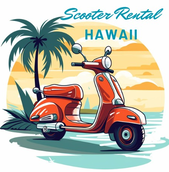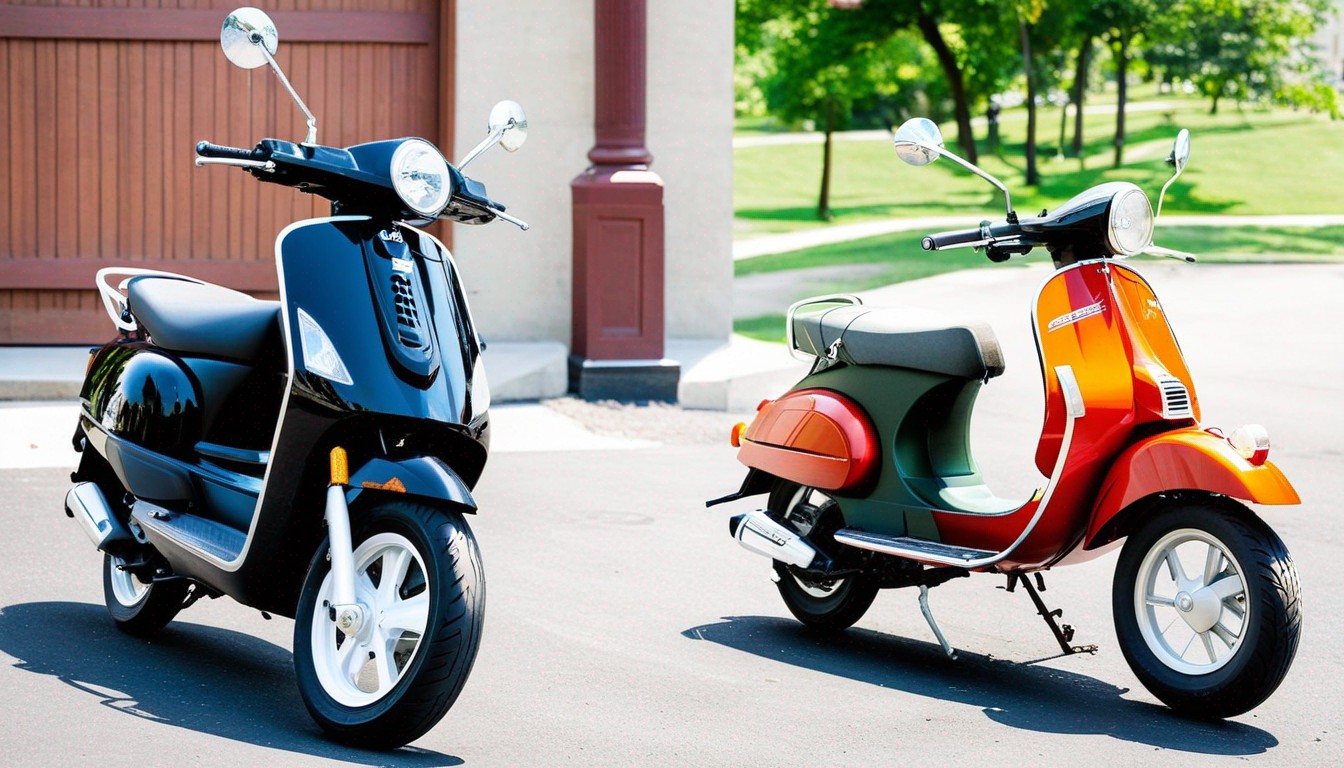Imagine standing in front of two cool rides: a moped and a scooter. They might look alike, but they’ve got distinct features.
While they share some resemblance, understanding what sets them apart is essential for making the right choice.
The primary differences between mopeds and scooters lie in their engine size, speed, pricing, and wheel size.
Stick around to learn more about how to differentiate between scooters and mopeds.
Moped: Overview
A moped is a nifty two-wheeled vehicle that’s like a hybrid between a bicycle and a motorcycle. When I ride one, I feel like I’ve got the best of both worlds.
The two-wheeler has an interesting origin that dates back to the early 20th century in Europe. The concept was to create a motorized bicycle, and it was initially developed in the early 1900s.
One of the early moped pioneers was the Swedish company “Monark,” which produced motorized bicycles with small engines attached to them.
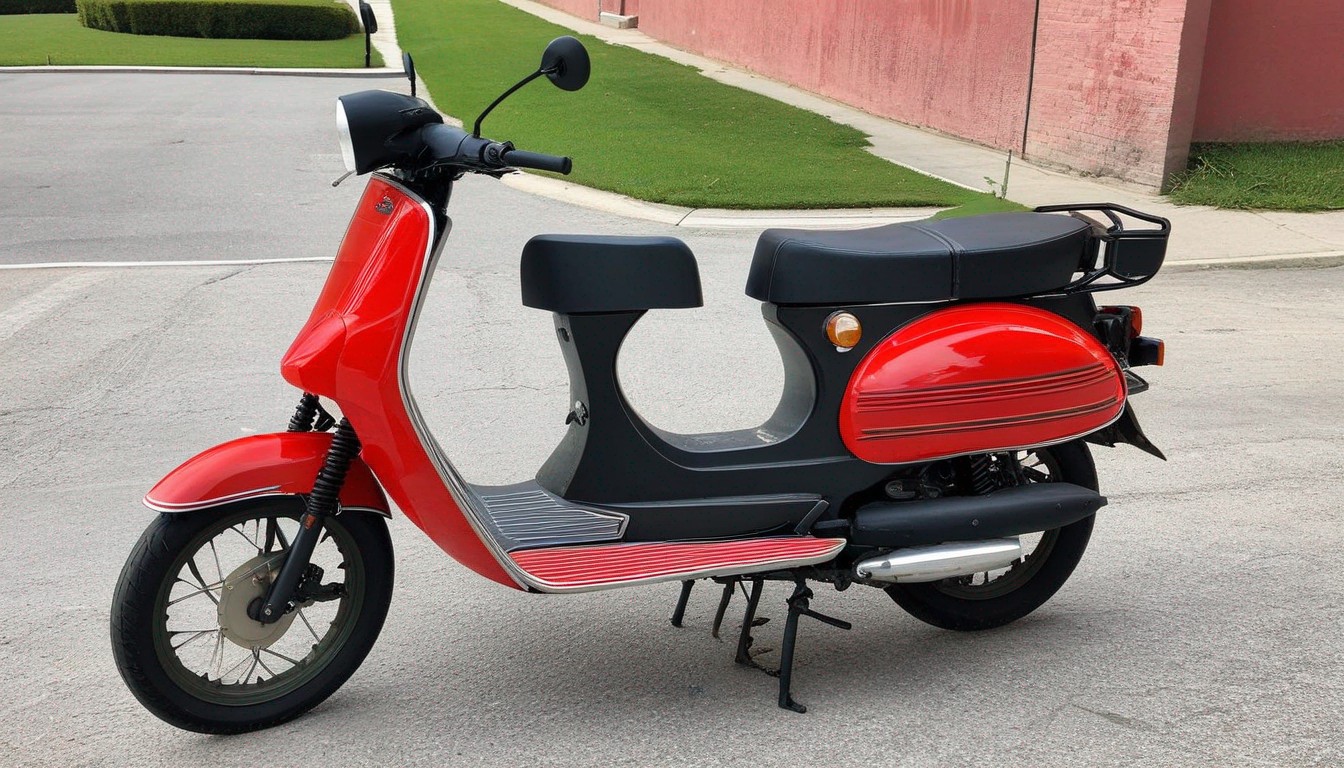
Mopeds provided an affordable and efficient mode of transportation, especially in the wake of fuel shortages. They were accessible to a wide range of people and offered a convenient way to get around towns and cities.
So, what sets a moped apart? Well, it typically has a small engine, usually with a capacity of 50 cubic centimeters or less. This engine gives it a bit more torque than a regular bicycle.
Plus, some traditional models carry pedals, just like a bicycle. The vehicle’s name is even a combination of “motor” and “pedal.”
Scooter: Overview
When I think of a scooter, I picture this sleek, and stylish ride perfect for navigating city streets. They’re designed for easy, efficient, and fuss-free commuting.
Scooters have been around for a while, going back to 1817 in Germany, when Karl von Drais de Sauerbrun invented the two-wheeler.
The invention was eventually motorized almost a century later by Arthur Hugo Cecil Gibson and Joseph F. Merkel.
The scooter’s story continued in mid-20th century Italy. The rise of the iconic Vespa and Lambretta popularized the ride.
Now, let’s talk about their engine performance. Scooters typically have engines ranging from 50cc for the smaller ones, which are perfect for zipping through city traffic, to larger engines for highway cruising.
Other than that, their automatic transmissions make them super easy to ride, and they often have nifty storage compartments to stash your stuff.
The Differences Between a Moped and a Scooter
Mopeds and scooters, often confused due to their similar appearances, represent distinct categories of two-wheeled vehicles.
While both offer efficient urban mobility, understanding their key differences is crucial for selecting the right ride for your needs.
Speed
For mopeds, you’re looking at a maximum speed that won’t go beyond 28 miles per hour. It’s like a gentle breeze on the road, perfect for easy city cruising.
Meanwhile, scooters can vary quite a bit in engine size. A tiny 50cc engine might zip along at around 35 to 40 miles per hour.
But if you step up to a 125cc scooter, you’re entering a whole new league. These two-wheelers can easily hit speeds of 60 to 70 miles per hour, making them a solid choice for longer journeys and highways.
Some worthy mentions of those high-speed scooters include the Kawasaki J125 and the Honda Forza 12, which can reach a lightning-speed 80 miles per hour.
Pricing
When it comes to pricing, I’ve noticed that there’s a pretty clear distinction between mopeds and scooters. Moped bikes tend to be less expensive than scooters. It all boils down to their power, engines, and speed.
Mopeds are generally more budget-friendly because they come with smaller engines and are designed for economical speeds.
These smaller engines mean lower manufacturing costs and, as a result, a more wallet-friendly price tag.
So, if you’re looking for a cost-effective way to get around town, a moped might be the way to go.
Scooters, on the other hand, often have more powerful engines and can reach higher speeds, which can bump up their price a bit.
Insurance
Regarding insurance, mopeds are often seen as lower risk, and that’s why they tend to be cheaper to insure compared to scooters.
But here’s the kicker: whether you’re on a moped or a scooter, you’re generally looking at a more wallet-friendly insurance bill than you would with a full-sized motorcycle.
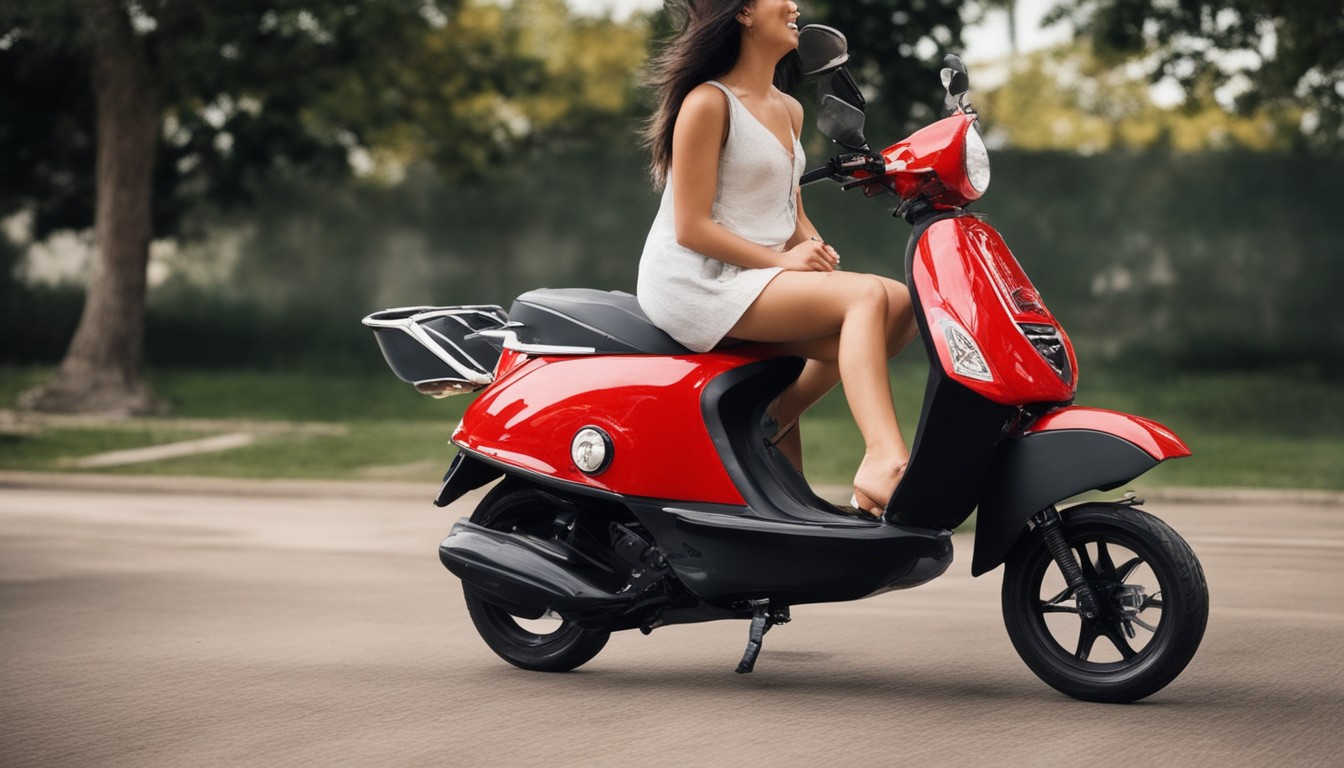
Wheel Size
When comparing scooters and mopeds, I’ve noticed a pretty clear difference in the size of their wheels. Scooters, in general, sport smaller wheels compared to motorcycles.
Most scooters usually roll around on wheels that measure about 10 to 12 inches in diameter. Classic scooters like Vespas are a great example of this. However, there are some maxi scooters out there fitted with larger wheels, sometimes reaching 15 to 16 inches in diameter.
That extra wheel size can provide a bit more stability and a smoother ride, especially at higher speeds.
One neat feature I’ve noticed is that scooter wheels are often interchangeable, meaning you can switch them between the front and rear. Some scooters even come equipped with a spare wheel, often called a “stepney,”
Besides scooter wheels, moped tires can reach up to 17 and 19 inches in diameter.
Engine Size
Let’s talk engines on mopeds and scooters. It’s one of the key differences that I’ve noticed. Mopeds, for starters, are the smaller players in the engine department.
They max out at around 50cc, and you won’t see them zooming much faster than about 28 miles per hour. It offers the perfect setup for zipping around town at a leisurely pace.
With scooters, it’s a whole different ball game.
These two-wheelers don’t have a set size limit for their engines. They can start from that same 50cc range and can go way beyond that.
I’m talking about scooters that boast engine sizes ranging from 50cc, for those nifty little ones, to some pretty hefty models with 850cc twin-cylinder engines.
Despite the range in engine sizes, both mopeds and scooters often share similar emissions levels.
Plus, modern scooters come with some snazzy features like cast aluminum frames, automatic start buttons, and integral counterbalancing engines.
Nowadays, you’ll even find electric scooters hitting the scene, offering an eco-friendly alternative.
Similarities Between a Moped and a Scooter
Besides all the differences between a moped and a scooter, the two-wheelers also share some similarities, including their licensing requirements and legal riding age.
Transmissions
Most scooters tend to use Continuously Variable Transmission or CVT. It’s automatic, and you just twist the throttle and go, which makes it super user-friendly, especially for beginners. It uses a belt and pulley system to give you a seamless range of gear ratios.
Some of those high-end maxi scooters with engines above 125cc come with Dual Clutch Transmission or DCT.
DCT gives you a bit more control, almost like a manual transmission, but without the clutch lever. It can offer a smoother ride and quicker gear changes. It has two separate gearboxes that work together. One gear engages while the other pre-selects the next gear.
Licensing and Age Requirements
When I tried to get a license for my moped, I realized that whether I wanted to ride a moped or a scooter, I needed something called a Provisional Motorcycle license.
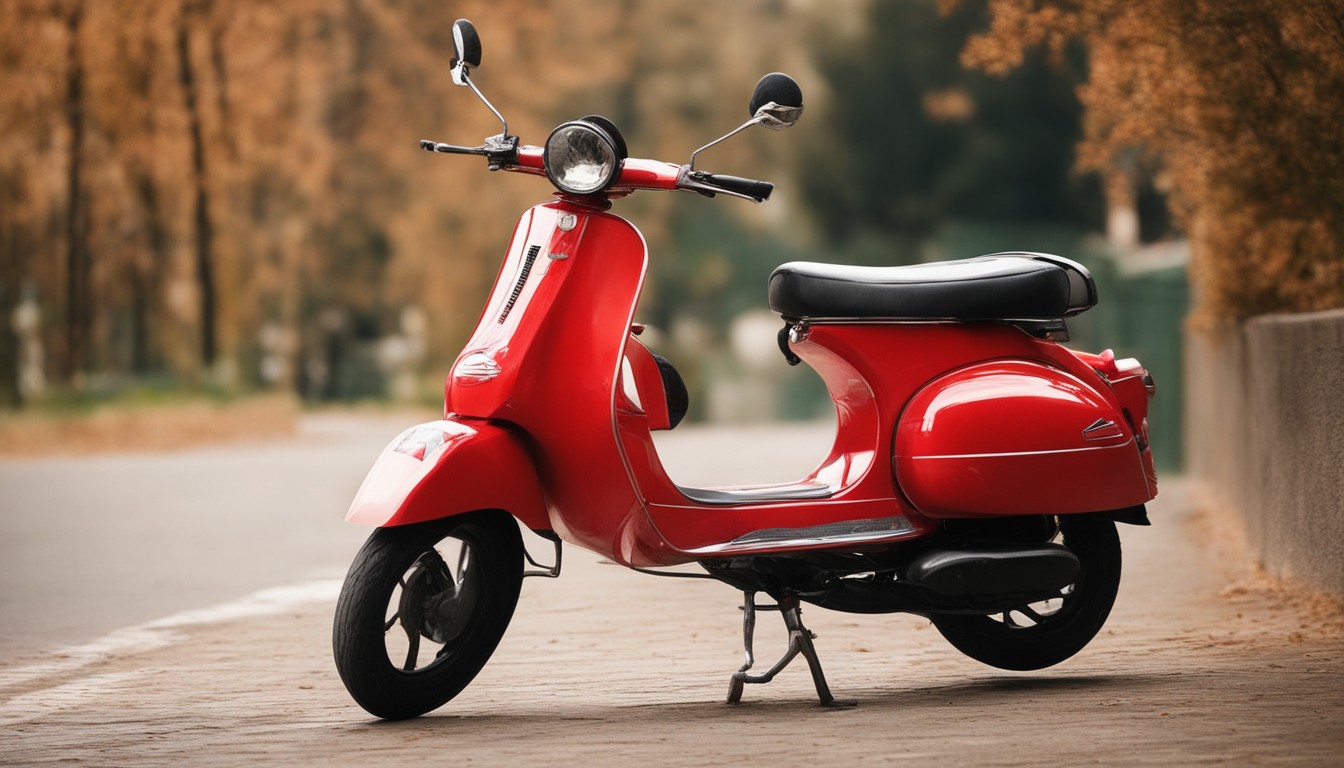
Another critical requirement when it comes to getting the document is the Compulsory Basic Training (CBT) certificate. Luckily, it’s valid for a couple of years.
Depending on your age and the type of two-wheeler you’re eyeing, there are some variations to legal requirements. For instance, a 17-year-old would need to carry a learner’s plate when riding a two-wheeler with around 125cc.
If you want to ride a moped with an engine output of 50cc and a top speed of 28 miles per hour, you can do so without learner’s plates and even bring a buddy along for the adventure.
Aside from that, you’ll have to choose between an AM Moped License or A1 Motorcycle License.
- AM Moped License: It allows you to ride a moped with an engine no larger than 50cc and a top speed of 28 miles per hour. You won’t need learner’s plates.
- A1 Motorcycle License: With this one, you’re stepping up a bit. You can cruise on motorcycles up to 125cc and not exceeding 11kw, which includes scooters. And just like with the AM license, no L plates are required.
Overall, in some specific regions or states, licensing might not be a necessity if you’re considering smaller engine sizes. I recommend checking with your local authorities to be certain about the regulations that apply where you live.
Protective Gear
Whether you’re on a moped or a scooter, protective gear is all about being smart and keeping yourself and your passenger safe.
When I’m gearing up for a ride, I always make sure to wear the essentials. That means a good helmet, gloves, a sturdy jacket, pants, and proper riding boots. Helmets are non-negotiable. Some states don’t have helmet laws, like New Hampshire, Illinois, and Iowa. Nonetheless, it’s better to keep your noggin safe.
Gloves not only protect your hands but also give you a better grip on the handlebars. A good jacket and pants made for riding are designed to shield you from the elements and provide some extra protection in case of a fall.
And those riding boots aren’t just for style – they’re all about keeping your feet safe and secure.
Moped vs. Scooter: Which Should You Choose?
After identifying the differences and similarities between mopeds and scooters, your decision hinges on a mix of factors.
If you’re aiming for quick city commutes and don’t mind cruising at modest speeds, a moped with its smaller engine and lower cost might be your go-to. Overall, it’s budget-friendly and ideal for short trips.
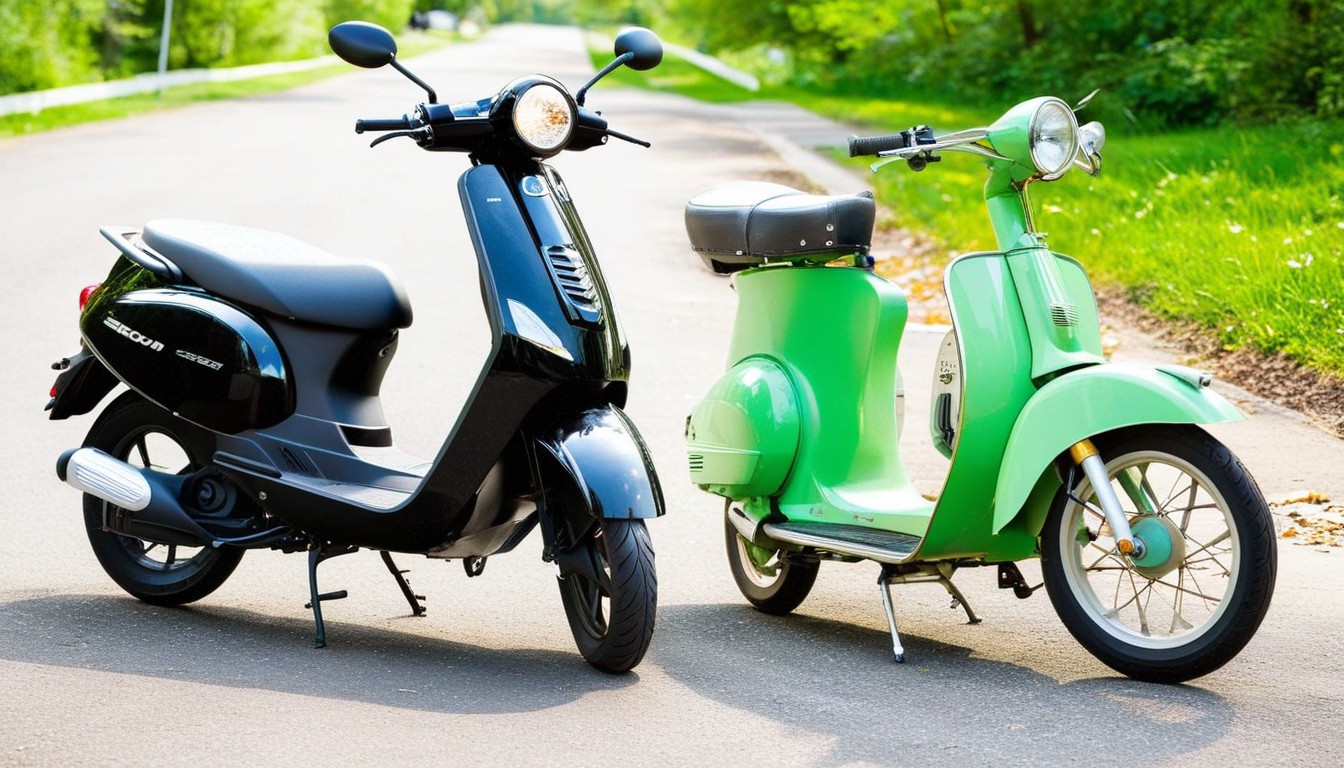
On the flip side, if you crave a bit more power and versatility, a scooter with its broader range of engine sizes and higher speeds might win you over.
While it can be pricier, the added speed and potential for highway travel make it a better fit for longer journeys.
FAQs
Are mopeds and scooters more fuel-efficient than cars?
Yes, both mopeds and scooters are generally more fuel-efficient than cars, making them a cost-effective and eco-friendly option for short-distance commuting.
Can I carry a passenger on a moped or scooter?
It depends on the specific vehicle and local regulations. Many scooters are designed to carry passengers, but some smaller mopeds may not have passenger accommodations.
Can you ride mopeds and scooters on highways?
Generally, mopeds are not suitable for highway speeds, while some scooters with larger engines can handle highway riding. Check your scooter’s specifications and local regulations for highway usage.
Can I ride a moped or scooter with just a learner’s permit?
In some places, you can ride a moped or scooter with just a learner’s permit. However, this also varies by location and may depend on your age and engine size. Check local regulations for specific learner’s permit requirements.
Do mopeds and scooters require regular maintenance?
Like any vehicle, mopeds and scooters require regular maintenance, including oil changes, brake checks, tire inspections, and general upkeep. It’s essential to follow the manufacturer’s maintenance schedule to keep your ride in good condition.
Can I modify my moped or scooter for better performance?
Modifying your moped or scooter can be tempting, but it’s crucial to stay within legal limits. Many regions have strict regulations regarding modifications that may affect safety or emissions.
You can modify your two-wheeler by adding a larger carburetor to increase air and fuel intake in the motor, upping your engine’s power performance.
Final Thoughts
In conclusion, mopeds and scooters offer a diverse range of options for urban commuters and enthusiasts alike.
While they may share some similarities, such as ease of use and cost-effectiveness, they also boast distinct characteristics in terms of engine size, speed, and features.
Whether you opt for the simplicity of a moped or the versatility of a scooter, it’s essential to understand the differences, adhere to local regulations, prioritize safety, and make a choice that aligns with your specific needs and preferences.
